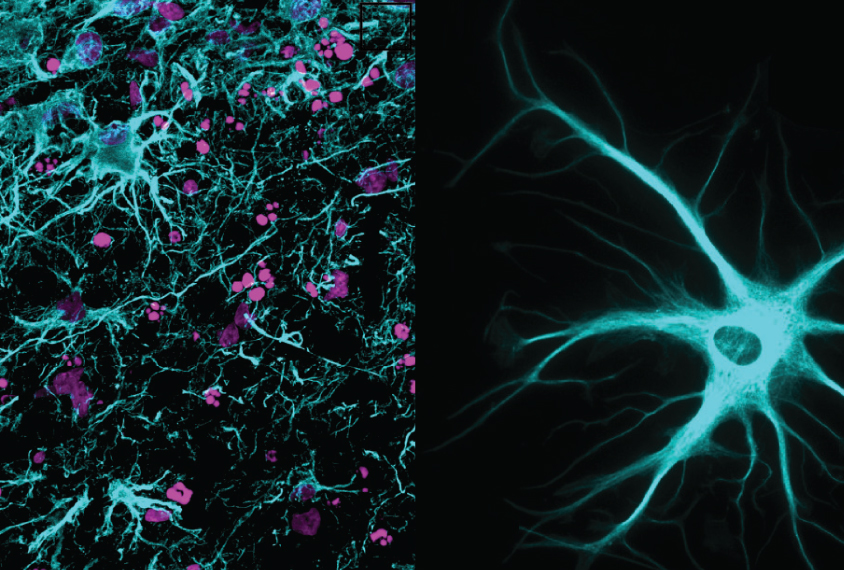
Lab-grown spheres yield star-shaped brain cells
A new technique allows researchers to generate brain cells called astrocytes and maintain them in culture as they mature.
A new two-step technique allows researchers to generate brain cells called astrocytes and maintain them in culture as they mature1. Researchers could use the method to explore the role of these star-shaped support cells in autism.
Astrocytes are the most abundant cells in the brain. They deliver nutrients to neurons and help construct and prune neuronal connections, called synapses. Scientists can derive stem cells from a person’s skin cells and transform them into astrocytes. But it is difficult to culture astrocytes long enough for the cells to fully mature.
In the new study, researchers combined two existing techniques. One transforms skin cells into floating spheres of brain cells, including astrocytes; the other separates astrocytes from other brain cells. The combination approach allows researchers to keep astrocytes in culture for up to 20 months.
Culturing the cells in spheres mimics the 3-D architecture of the brain, allowing the astrocytes to mature more fully than other methods do.
To create the spheres, the researchers derived stem cells from skin cells. They cultured the cells in chemicals that coax the cells to cluster and transform into neurons, astrocytes and other brain cells. Starting at 40 days in culture, they broke the spheres apart with an enzyme and then poured the cells into culture dishes coated with antibodies that stick to astrocytes.
The first cells with astrocyte-like properties emerge after 50 days, the researchers found. The longer the spheres grow, the more mature the astrocytes become, eventually developing the branching arms that give them their stellar look.
Mature-looking astrocytes collected after 150 days absorb the chemical messenger glutamate, which excites neurons. Astrocytes are known to mop up extra glutamate from synapses.
The astrocytes also form synapses. And astrocytes mixed with just the neuronal bulb, or ‘bouton,’ at the synapse engulf the boutons, as if they are pruning synapses. The results appeared 16 August in Neuron.
References:
- Sloan S.A. et al. Neuron 95, 779-790 (2017) PubMed
Recommended reading

Too much or too little brain synchrony may underlie autism subtypes

Developmental delay patterns differ with diagnosis; and more
Explore more from The Transmitter

This paper changed my life: Shane Liddelow on two papers that upended astrocyte research
Dean Buonomano explores the concept of time in neuroscience and physics

